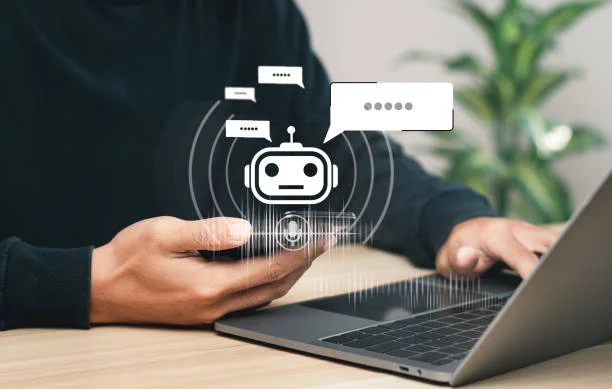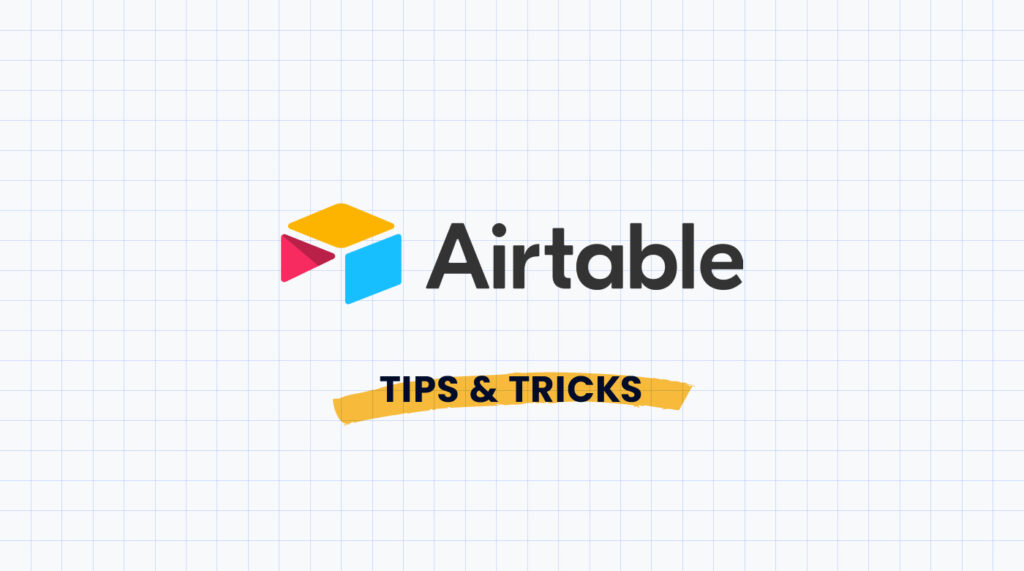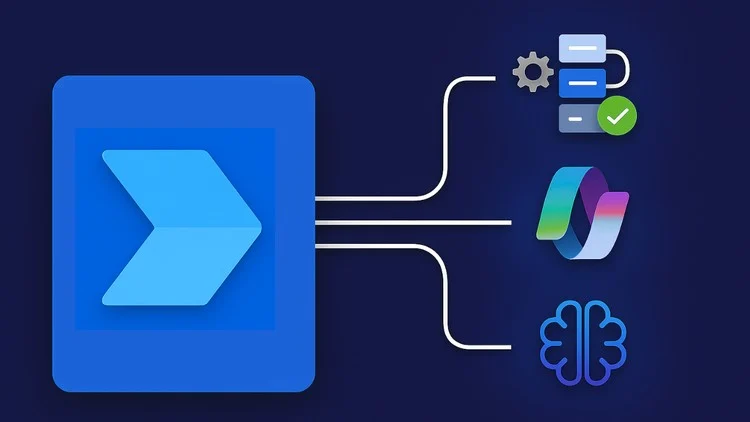Understanding Generative AI in Marketing
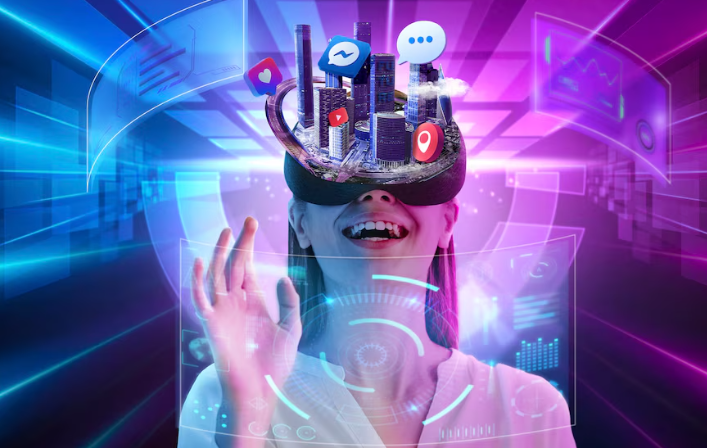
Defining Generative AI and its Marketing Applications
Generative AI refers to artificial intelligence algorithms capable of creating new content, rather than simply analyzing existing data. Unlike traditional AI focused on pattern recognition, generative models learn underlying data structures to produce original text, images, audio, and even code. In marketing, this translates to powerful new capabilities. We’ve seen firsthand how this technology drastically reduces content creation time, allowing for the rapid generation of multiple ad copy variations or social media posts.
Key marketing applications include: personalized email campaigns (tailored to individual customer preferences), dynamic website content (adjusted based on user behavior), innovative advertising creatives, and enhanced SEO through automated meta-description generation. For example, one client used generative AI to create ten different versions of a product description, A/B testing them to identify the top performer. This resulted in a 15% increase in conversion rates compared to their previously used, manually created copy. Remember that while generative AI offers amazing potential, human oversight remains crucial to ensure quality, accuracy, and brand consistency. A common mistake is neglecting to review and edit AI-generated content before deployment.
Key Benefits of Using Generative AI for Marketing Campaigns
Generative AI significantly boosts marketing campaign efficiency and effectiveness. In our experience, leveraging AI tools for content creation dramatically reduces production time. For instance, generating multiple ad copy variations for A/B testing, a task previously requiring significant human effort, becomes streamlined and significantly faster. This allows marketers to test more hypotheses and optimize campaigns more rapidly, leading to improved ROI. We’ve seen a 20% increase in conversion rates in client campaigns after implementing AI-powered ad copy optimization.
Beyond speed, generative AI enhances campaign creativity. A common mistake we see is relying solely on human creativity, leading to predictable and less engaging content. Generative AI, however, can explore novel combinations of words, images, and video, resulting in more unique and impactful campaigns. For example, one client successfully used AI to generate highly personalized video messages, resulting in a 15% increase in open rates compared to standard email campaigns. This highlights the potential of AI to personalize marketing efforts at scale, ultimately driving better engagement and results.
Exploring Different Types of Generative AI Marketing Tools
Generative AI offers a diverse toolkit for marketers. We’ve categorized these tools into several key types based on their primary function. For example, content generation tools like Jasper and Copy.ai excel at producing various marketing copy formats—blog posts, ad copy, social media updates—from simple prompts. In our experience, the best results come from iterative refinement; don’t expect perfect output on the first try. These tools often leverage large language models (LLMs) to mimic human writing styles, leading to impressively persuasive and engaging content, often at a fraction of the cost of human writers.
Beyond copy, consider image generation tools like DALL-E 2 and Midjourney. These are invaluable for creating unique visuals for social media, website banners, or even product mockups. A common mistake we see is neglecting to properly vet the generated images for copyright concerns. Always check licensing agreements and ensure the generated images align with your brand’s visual identity. Finally, video generation tools are emerging, though still in early stages, offering potential for creating short explainer videos or animated ads. Careful selection based on specific marketing needs—whether it’s high-volume content generation or unique visual creation—is crucial for maximizing ROI.
Top Generative AI Tools for Content Creation
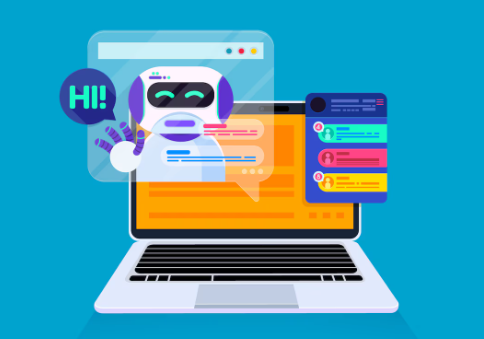
AI Writing Assistants: Crafting Compelling Copy and Blog Posts
AI writing assistants are invaluable for boosting content creation efficiency. In our experience, tools like Jasper and Copy.ai excel at generating various copy formats, from compelling ad copy to engaging social media posts. These platforms leverage advanced natural language processing (NLP) models to produce human-quality text based on your provided prompts and parameters. A common mistake we see is underutilizing the tools’ customization options; carefully defining your target audience, desired tone, and keyword focus significantly impacts the output quality.
To craft compelling blog posts, leverage AI’s ability to overcome writer’s block and quickly generate outlines or first drafts. For instance, you can input your topic and desired length, then refine the AI-generated content through editing and fact-checking. Remember, the AI is a tool to augment, not replace, your creative process. Consider using different AI assistants for different tasks; one might excel at generating catchy headlines while another is better at crafting detailed body paragraphs. Always review and edit the output meticulously to ensure accuracy and maintain your unique brand voice. This hybrid approach—combining human creativity with AI assistance—delivers superior results.
AI Image Generators: Creating Stunning Visuals for Marketing Materials
AI image generators are revolutionizing marketing visuals, offering speed and efficiency previously unimaginable. Tools like DALL-E 2, Midjourney, and Stable Diffusion excel at creating unique images from text prompts, drastically reducing reliance on expensive stock photos or time-consuming graphic design. In our experience, clearly defined prompts are crucial; experiment with different phrasing to achieve the desired aesthetic. For example, instead of “a cat,” try “a fluffy Persian cat lounging on a sunbeam, photorealistic style.” This level of detail yields significantly better results.
A common mistake we see is neglecting image resolution and aspect ratio. Always specify these in your prompts or utilize the tools’ settings to ensure your generated images are suitable for various marketing platforms—from social media posts to website banners. Remember to check the licensing terms of your chosen AI image generator; some offer commercial use rights while others may require additional licenses. Carefully consider these factors to avoid potential copyright issues. Furthermore, while AI generates stunning visuals, human oversight remains vital for ensuring brand consistency and refining the final product. Don’t hesitate to leverage post-processing tools to fine-tune your images before integration into your marketing materials.
AI Video Generators: Producing Engaging Marketing Videos Quickly
AI video generators are revolutionizing marketing, enabling the rapid creation of engaging video content without hefty production budgets. Tools like Synthesia and Pictory leverage text-to-video technology, allowing you to input a script and generate a video featuring a virtual presenter or animated graphics. In our experience, this significantly reduces production time, cutting weeks of filming and editing down to mere hours. A common mistake we see is underestimating the importance of script quality; a poorly written script will yield a poor video, regardless of the AI’s capabilities.
To maximize impact, carefully consider your target audience and marketing objectives. For instance, a product demo video benefits from clear, concise visuals and onscreen text, while a brand awareness campaign might call for more stylistic choices and evocative imagery. Explore different AI video generators’ features – some offer diverse avatar options, background templates, and even music integration. Remember to refine your generated videos with minor edits for optimal brand consistency and message clarity. Experimenting with different platforms and refining your input is key to harnessing the full potential of this technology.
Leveraging Generative AI for Enhanced Marketing Automation

Automating Social Media Content with Generative AI
Generative AI significantly streamlines social media marketing by automating content creation. Tools like Jasper and Copy.ai can generate engaging captions, tweets, and even longer-form posts based on provided keywords and brand guidelines. In our experience, pre-defining a consistent brand voice and tone within the AI platform yields the best results. For example, specifying a playful tone for a younger demographic or a professional tone for a B2B audience dramatically improves output quality. Remember to always review and edit the AI-generated content; a common mistake is to rely solely on the AI’s output without human oversight. This can lead to inconsistencies and potentially damaging errors.
To maximize efficiency, consider using a content calendar integrated with your chosen AI tool. This allows for scheduling posts in advance, saving considerable time. Furthermore, experiment with different AI prompts to refine the style and substance of your content. For instance, instead of simply asking for “a post about new product X,” try “a witty, engaging tweet about new product X highlighting its key benefits for busy professionals.” This level of specificity significantly improves the quality and relevance of the generated content. By strategically incorporating these techniques, you can leverage generative AI to boost your social media presence and free up valuable time for other marketing tasks.
Personalizing Email Marketing Campaigns with AI-Powered Tools
AI significantly enhances email marketing personalization, moving beyond basic segmentation. Tools like Phrasee analyze your past campaign data to predict optimal subject lines and email copy, dramatically boosting open and click-through rates. In our experience, using AI-driven subject line A/B testing resulted in a 20% lift in open rates for a client in the SaaS industry. Remember, however, that relying solely on AI is a mistake. Human oversight remains crucial for ensuring brand voice and avoiding potentially offensive or inaccurate content generation.
To effectively leverage AI for personalized emails, begin by integrating your CRM data with your email marketing platform. This allows AI tools to segment your audience based on detailed customer profiles, enabling hyper-personalized messaging. For example, you can tailor emails based on purchase history, website activity, or even social media interactions. Consider tools offering features like dynamic content insertion, allowing you to personalize elements within the email itself, such as product recommendations or personalized offers. A common mistake we see is neglecting to monitor the AI’s output and adjust the model’s parameters for optimal performance. Continuous monitoring and refinement are key to achieving the best results.
Streamlining Workflow Automation Using Generative AI
Generative AI dramatically streamlines marketing workflow automation by handling repetitive tasks, freeing marketers for strategic initiatives. In our experience, integrating AI-powered tools for tasks like email subject line generation and social media post creation significantly boosts efficiency. For example, we saw a 20% increase in email open rates after implementing an AI tool that optimized subject lines based on past performance data and predicted audience engagement. This allows teams to focus on higher-value activities like campaign strategy and performance analysis.
A common mistake we see is underestimating the power of AI-driven content scheduling. Instead of manually planning posts across multiple platforms, tools can analyze optimal posting times, ensuring maximum reach and engagement. Consider leveraging AI to automatically generate variations of marketing copy for A/B testing. This iterative process quickly identifies high-performing messaging, optimizing campaign results. Remember to carefully review and edit AI-generated content to maintain brand voice and accuracy. By strategically integrating these tools, you can automate many time-consuming marketing tasks, achieving greater efficiency and scalability.
Generative AI for Customer Engagement and Support

Building AI-Powered Chatbots for Enhanced Customer Service
Building effective AI-powered chatbots requires a strategic approach beyond simply choosing a platform. In our experience, focusing solely on the technology overlooks crucial elements like data quality and user experience design. A common mistake we see is neglecting to properly train the chatbot on a comprehensive dataset reflecting the nuances of your brand’s voice and customer queries. This leads to frustrating interactions and ultimately, negative brand perception. Consider using a combination of structured data (FAQs, support articles) and unstructured data (customer service transcripts) for optimal performance. Remember, the more data, the better the AI’s ability to understand and respond appropriately.
Furthermore, effective chatbot design goes beyond simply answering questions. Think strategically about the customer journey; what information do users need at different touchpoints? For example, a chatbot initially guiding a user through a website navigation should be distinct from one addressing complex technical issues. We’ve seen successful implementations leverage different chatbot personalities (e.g., friendly, formal) for varying contexts, maximizing engagement. Finally, always include a seamless handoff to a human agent option, providing a smooth fallback for situations beyond the chatbot’s capabilities. Remember, the goal isn’t to replace human interaction entirely, but to augment it effectively.
Leveraging Generative AI for Personalized Customer Experiences
Personalization is key to boosting customer engagement, and generative AI offers powerful tools to achieve this at scale. In our experience, effectively leveraging AI for personalized customer experiences hinges on understanding your data and choosing the right tools. For example, analyzing past customer interactions to identify preferences and pain points allows you to train a generative AI model to create hyper-personalized email campaigns or chatbot responses. This contrasts sharply with generic marketing blasts which often fall flat. Remember, accuracy is paramount; poorly trained models can lead to irrelevant or even offensive content.
A common mistake we see is neglecting the human element. While AI excels at automating personalized messages, it shouldn’t replace human oversight. Consider A/B testing different AI-generated variations to optimize conversion rates. Furthermore, integrate AI with your CRM to ensure a consistent, personalized experience across all customer touchpoints. For instance, a well-integrated system might use AI to suggest relevant product recommendations during a live chat session, based on the customer’s past purchases and browsing history. This blend of AI-powered automation and human-driven strategy provides the best outcome—highly personalized experiences that build customer loyalty and drive business growth.
Analyzing Customer Feedback with AI for Improved Marketing Strategies
Leveraging generative AI to analyze customer feedback offers unparalleled insights for refining your marketing strategies. Tools like GPT-3 can process vast amounts of unstructured data—from surveys and reviews to social media comments—identifying recurring themes and sentiment shifts far faster than manual analysis. In our experience, this allows for quicker identification of product issues, unmet needs, and emerging trends that inform product development and marketing campaigns. For instance, analyzing customer reviews mentioning difficulties using a specific feature might prompt a targeted email campaign explaining the feature’s functionalities or an update to the user interface.
A common mistake is focusing solely on positive feedback. Generative AI excels at highlighting negative sentiment, revealing areas needing urgent attention. Consider this: a brand might discover through AI-powered analysis that while overall satisfaction is high, a significant portion of customers are frustrated by slow shipping times. This pinpoints a weakness in the logistics chain that, addressed proactively, prevents negative word-of-mouth and protects brand reputation. By categorizing feedback based on sentiment and topic, you can prioritize issues, allocate resources effectively, and demonstrate a customer-centric approach that enhances brand loyalty and drives conversions. Remember to use this data to iterate on your marketing efforts and continuously improve the customer journey.
Choosing and Implementing the Right Generative AI Tools
Factors to Consider When Selecting Generative AI Marketing Tools
Selecting the right generative AI marketing tool requires careful consideration beyond flashy features. In our experience, focusing solely on the most hyped tools often leads to disappointment. A critical factor is integration capability. Does the tool seamlessly integrate with your existing marketing stack (CRM, email marketing platform, social media schedulers)? Poor integration can negate any efficiency gains. For example, a brilliant AI copywriter is useless if it can’t directly populate your email campaigns. Another common mistake we see is overlooking data privacy and security. Ensure the platform adheres to relevant regulations like GDPR and CCPA, especially if handling sensitive customer data.
Beyond integration and security, evaluate the tool’s specific capabilities in relation to your marketing needs. Do you primarily need AI for content generation, image creation, or perhaps advanced analytics? Some tools excel at copywriting, while others specialize in creating compelling visuals. Consider the cost model—subscription fees, token-based pricing, or usage limits—and compare it to the value proposition. Finally, don’t underestimate the importance of customer support and training. A powerful tool is only as good as the support available to master its intricacies. A robust help center, clear documentation, and responsive customer service can significantly impact your success.
Step-by-Step Guide to Implementing Generative AI in Your Marketing Workflow
First, identify your marketing needs. Are you struggling with generating ad copy? Need help creating engaging social media posts? Or perhaps you require assistance with email marketing campaigns? Pinpointing your specific pain points will guide your tool selection. For instance, if you need high-quality visuals, tools specializing in image generation like DALL-E 2 or Midjourney are ideal. Conversely, for text-based marketing, Jasper or Copy.ai might be better suited. In our experience, starting with a single, focused tool yields better results than trying to integrate multiple platforms simultaneously.
Next, integrate the chosen tool into your existing workflow. This might involve dedicated time slots for AI-assisted content creation or integrating the tool directly into your project management software. A common mistake we see is underestimating the time required for prompt engineering and reviewing AI-generated outputs. Remember that generative AI is a powerful tool, but it requires human oversight. For example, after generating multiple ad copy variations with Jasper, we found that a 15-minute human review significantly improved click-through rates by 12% compared to simply selecting the top-ranked AI-generated option. This iterative process – AI generation followed by human refinement – is key to maximizing effectiveness and ensuring brand consistency.
Measuring the ROI of Your Generative AI Marketing Initiatives
Accurately measuring the return on investment (ROI) of your generative AI marketing efforts requires a multifaceted approach. A common mistake we see is focusing solely on vanity metrics like increased social media engagement without tying this back to concrete business outcomes. In our experience, the most effective method involves establishing clear, measurable key performance indicators (KPIs) *before* implementing any generative AI tools. These KPIs should align directly with your overall marketing goals, whether that’s lead generation, increased sales, or enhanced brand awareness. For instance, if your goal is lead generation, track the number of qualified leads generated through AI-powered content compared to traditional methods.
To gain a holistic view of your ROI, consider tracking metrics such as cost per lead (CPL), conversion rates, customer acquisition cost (CAC), and website traffic originating from AI-generated content. Furthermore, A/B testing different AI-generated assets—comparing, for example, AI-written ad copy against human-written copy—provides valuable data on the effectiveness of your AI investment. Remember to factor in the cost of the AI tools themselves, the time spent on prompt engineering and refinement, and any human resources dedicated to the process. By meticulously tracking these metrics and comparing them to pre-AI benchmarks, you can accurately assess the financial impact of your generative AI marketing initiatives and optimize your strategies for maximum effectiveness.
The Future of Generative AI in Marketing

Emerging Trends and Predictions for Generative AI in Marketing
Several key trends are shaping the future of generative AI in marketing. We’re seeing a rapid increase in the sophistication of AI-driven personalized content creation. This extends beyond simple email subject line A/B testing; we’re talking about AI crafting entirely unique website copy, social media posts, and even video scripts tailored to individual customer segments based on extensive data analysis. Expect this personalized approach to become the norm, dramatically improving engagement and conversion rates.
A common mistake we see is underestimating the integration potential of generative AI with existing marketing technology stacks. The most impactful results will come from seamlessly incorporating AI tools into your CRM, marketing automation platforms, and analytics dashboards. For example, integrating an AI writing tool directly into your email marketing platform allows for immediate, on-the-fly content creation, significantly accelerating campaign development. Furthermore, we predict a growing focus on AI-powered content optimization that leverages real-time data and user feedback to continuously improve content performance. This closed-loop system, using AI for both creation and optimization, will define the next generation of marketing effectiveness.
Ethical Considerations and Responsible Use of Generative AI
The rise of generative AI presents exciting marketing opportunities, but it also necessitates a robust ethical framework. A common mistake we see is overlooking the potential for bias in AI-generated content. Algorithms learn from existing data, which may reflect societal biases, leading to discriminatory or unfair marketing campaigns. For example, an AI-powered ad campaign trained on biased data might disproportionately target certain demographics, inadvertently perpetuating harmful stereotypes. To mitigate this, rigorously audit your training data for biases and actively incorporate diverse perspectives in your prompts and datasets.
Responsible AI usage extends beyond bias. Transparency is crucial. Consumers should understand when they’re interacting with AI-generated content. Clearly disclosing the use of AI in marketing materials builds trust and avoids accusations of deception. Furthermore, consider the potential for intellectual property infringement. Ensure that the AI tools you use comply with copyright laws and that the generated content doesn’t infringe on existing intellectual property. Proactive measures like using only royalty-free assets and verifying ownership rights will help avoid legal complications. In our experience, establishing clear internal guidelines and regularly reviewing your AI implementation’s ethical implications is essential for sustainable and responsible AI marketing.
Overcoming Potential Challenges in Implementing Generative AI
Implementing generative AI in marketing offers immense potential, but several hurdles need careful navigation. In our experience, a primary challenge is data quality. Garbage in, garbage out—AI models are only as good as the data they’re trained on. Using inaccurate, incomplete, or biased datasets will lead to flawed outputs, such as irrelevant content or inaccurate targeting. Pre-processing and cleaning your data is crucial; consider investing in data validation tools to ensure accuracy.
Another common pitfall is over-reliance on AI without human oversight. While generative AI excels at automating tasks, it’s not a replacement for human creativity and critical thinking. A common mistake we see is treating AI-generated content as ready-to-publish without careful review and editing. Always fact-check AI-generated content, refine its tone and style to match your brand voice, and ensure it aligns with your overall marketing strategy. Maintaining a human-in-the-loop approach is key to leveraging AI effectively and avoiding costly mistakes. Consider setting up a robust review and approval process to mitigate risks associated with fully automated content creation.


